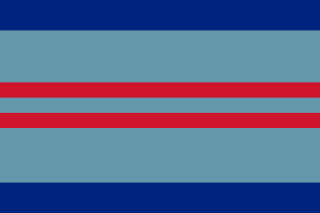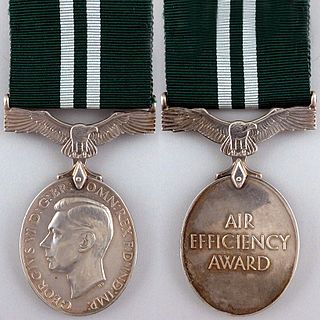Commodore is a senior naval rank used in many navies which is equivalent to Brigadier and Air Commodore that is superior to a navy captain, but below a rear admiral. It is either regarded as the most junior of the flag officers rank or may not hold the jurisdiction of a flag officer at all depending on the officer's appointment. Non-English-speaking nations often use the rank of flotilla admiral, counter admiral, or senior captain as an equivalent, although counter admiral may also correspond to rear admiral.

Group captain is a senior commissioned rank in many air forces. Group captain has a NATO rank code of OF-5, meaning that it ranks above wing commander, immediately below air commodore and is the equivalent of the naval rank of captain and the rank of colonel in other services.

Air vice-marshal (AVM) is a two-star air officer rank which originated in and continues to be used by the Royal Air Force. The rank is also used by the air forces of many countries which have historical British influence and it is sometimes used as the English translation of an equivalent rank in countries which have a non-English air force-specific rank structure. Air vice-marshals may be addressed generically as "air marshal".
Pilot officer is the lowest commissioned rank in the Royal Air Force and the air forces of many other Commonwealth countries. It ranks immediately below flying officer.

No. 28 Squadron is a Royal Australian Air Force (RAAF) Active Reserve squadron, based at HMAS Harman in the Australian Capital Territory. Its main role is public affairs and imagery.

The Women's Auxiliary Air Force (WAAF), whose members were referred to as WAAFs, was the female auxiliary of the Royal Air Force during World War II. Established in 1939, WAAF numbers exceeded 180,000 at its peak strength in 1943, with over 2,000 women enlisting per week.

The British Commonwealth Occupation Force (BCOF) was the British Commonwealth taskforce consisting of Australian, British, Indian and New Zealand military forces in occupied Japan, from 21 February 1946 until the end of occupation in 1952. At its peak, the BCOF comprised about 40,000 personnel, equal to about 25% of the number of US military personnel in Japan.
Auxiliaries are personnel that assist the military or police but are organised differently from such forces. Auxiliary may be volunteers undertaking support functions or performing certain duties such as garrison troops, usually on a part-time basis. Unlike a military reserve force, an auxiliary force does not have the same degree of training as regular soldiers or integration into a fighting force.

RAAF Base Learmonth, also known as Learmonth Airport, is a joint use Royal Australian Air Force base and civil airport. It is located near the town of Exmouth on the north-west coast of Western Australia. RAAF Base Learmonth is one of the RAAF's three "bare bases". No RAAF units are currently based at Learmonth and it is maintained by a small caretaker staff during peacetime.

The Royal Auxiliary Air Force (RAuxAF), formerly the Auxiliary Air Force (AAF), together with the Air Force Reserve, is a component of Her Majesty's Reserve Air Forces. It provides a primary reinforcement capability for the regular service, and consists of paid volunteers who give up some of their weekends, evenings and holidays to train at one of a number of squadrons around the United Kingdom. Its current mission is to provide trained personnel in support of the regular RAF. Queen Elizabeth II is Air Commodore-in-Chief of the RAuxAF.
No. 26 Squadron RAAF is a Royal Australian Air Force Reserve squadron, headquartered at RAAF Base Williamtown in New South Wales, Australia. The squadron's role is to provide trained personnel to regular RAAF units during operations and on exercise.

The Women's Auxiliary Australian Air Force (WAAAF) was formed in March 1941, after considerable lobbying by women keen to serve and by the Chief of the Air Staff, who wanted to release male personnel serving in Australia for service overseas. The WAAAF was the first and largest of the wartime Australian women's services. It was disbanded in December 1947.

The Air Efficiency Award, post-nominal letters AE for officers, was instituted in 1942. It could be awarded after ten years of meritorious service to part-time officers, airmen and airwomen in the Auxiliary and Volunteer Air Forces of the United Kingdom and the Territorial Air Forces and Air Force Reserves of the Dominions, the Indian Empire, Burma, the Colonies and Protectorates.

The Auster AOP.6 was a British military air observation aircraft produced by Auster Aircraft Limited to replace the numerous wartime Taylorcraft Auster aircraft then in-service.
No. 27 Squadron RAAF is a Royal Australian Air Force (RAAF) reserve and ground support squadron located at RAAF Base Townsville, Queensland. The squadron was formed on 1 July 1981 to recruit and train RAAF reservists in the Townsville area and in July 2010 took on the additional role of providing support services to RAAF Base Townsville.

Clare Grant Stevenson, AM, MBE was the inaugural Director of the Women's Auxiliary Australian Air Force (WAAAF), from May 1941 to March 1946. As such, she was described in 2001 as "the most significant woman in the history of the Air Force". Formed as a branch of the Royal Australian Air Force (RAAF) in March 1941, the WAAAF was the first and largest uniformed women's service in Australia during World War II, numbering more than 18,000 members by late 1944 and making up over thirty per cent of RAAF ground staff.

No. 614 Squadron was originally formed on 1 June 1937 as an army co-operation squadron unit of the Auxiliary Air Force. It served during the Second World War first in this role and later as a bomber squadron. Upon reformation it served as a fighter squadron until the disbandment of the Royal Auxiliary Air Force on 10 March 1957.
Air Commodore-in-Chief is a senior honorary air force appointment which originated in the Royal Air Force and now exists in the air forces of various Commonwealth realms. Appointees are made Air Commodore-in-Chief of a large air force organisation or formation. Initially only the British monarch held air commodore-in-chief appointments. However, since the second half of the 20th century, other members of the royal family have been appointed to such positions in the United Kingdom and the other realms such as Australia, Canada and New Zealand. As of 2020, these appointments have been given to just six senior members of the royal family, of whom four were reigning or future monarchs of the Commonwealth realms.

Mary Teston Luis Bell was an Australian aviator and founding leader of the Women's Air Training Corps (WATC), a volunteer organisation that provided support to the Royal Australian Air Force (RAAF) during World War II. She later helped establish the Women's Auxiliary Australian Air Force (WAAAF), the first and largest women's wartime service in the country, which grew to more than 18,000 members by 1944.
Air vice-marshal is the third highest active rank of the Royal Australian Air Force and was created as a direct equivalent of the British Royal Air Force rank of air vice-marshal. It is also considered a two-star rank. The Australian Air Corps adopted the RAF rank system on 9 November 1920 and this usage was continued by its successor, the Royal Australian Air Force.












